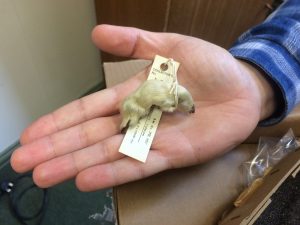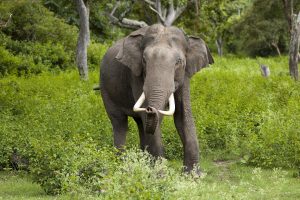
A pair of Salford scientists have made a groundbreaking discovery that there may be missing links between mammals like hedgehogs and rhinos.
Researchers from Salford University have invented a new method of fossil analysis that allows them to build the missing bridges in the evolution of mammals.
Dr Robin Beck and PhD Student Charles Baillie’s new study published today in Proceedings of the Royal Society B shows a new way of approaching fossil studies
Dr Beck, 37 from Bolton, joined the University of Salford four years ago, but this research has taken up much of the last two years, alongside his co-author and PhD student Charles Baillie.
Dr Beck said; “What we’re doing is looking at evolutionary relationships, so essentially family trees of different species.
“People have been trying to figure out how different species are related to each other for over a hundred years.”
“The key question is does this mean that anatomical data is fundamentally unreliable?”
In most cases of species identification anatomical data is used, which is made up of features such as their skeleton, but in recent years use of molecular data has found surprising results.

While in most cases the molecular and anatomical data agrees, the exceptions found made the team question the accuracy of making decisions based on anatomical data, developing a simulator to test their study.
Dr Beck said; “When looking at living mammals we find things like rhinos and elephants are not that closely related.
“In fact a rhino is actually more closely related to a hedgehog than an elephant.”

“What we’re showing is actually, if we have enough fossils, that it helps us untangle what is evidence of a close relationship and what is actually evidence of convergent evolution.”
☑️POLL: What do you think rhinos are more closely related to? We have a story coming up that might surprise you ? #SalfordNow
— Salford Now (@SalfordNow) December 12, 2018
All the similarities between elephants and rhinos are a result of convergent evolution.
Convergent evolution means two species have independently evolved the same adaptations due to their environment and conditions.

Dr Beck explained; “To take a very simple example; bats and birds both have wings, but those have evolved entirely independently and they are built in very different ways.
“Bats wings are basically skin membranes between fingers and obviously bird wings are made of feathers.”
The next study in the works is a look into the Marsupial Mole, looking into convergent evolution of Australian animals adapting to their environment.















Recent Comments